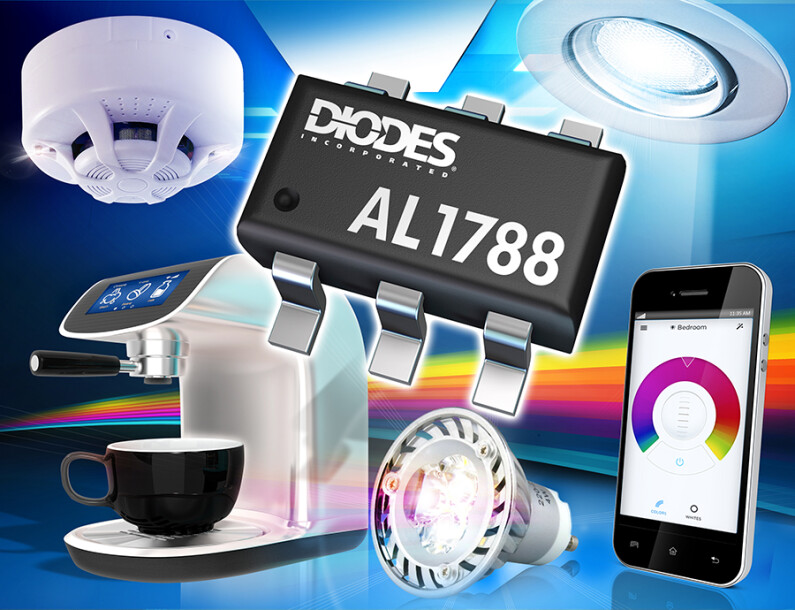How to Avoid Menu Anxiety when Developing LED Power Solutions

By LiFei Ruan, LED Senior Marketing Manager
Do you dread going to dinner with that certain someone because you just know they are practically incapable of making a decision when looking at a menu? While this can be vexing, try not to blame them because they could be suffering from something psychologist Barry Schwarz has termed the Paradox of Choice. When we are presented with too many choices we can become overwhelmed and start to question our decision, if we’re able to make one at all, that is.
Menu Engineers (yes, they do exist) acknowledge this and will actually try to alleviate it by minimizing the number of items on a menu, while subtly directing you towards the high-ticket options. There are a few tricks of the trade to make us do this, such as using negative space, positioning things in certain places, and juxtaposing expensive items with those more reasonably priced, as well as adding those mouth-watering photos (your burger, on a good day).
Some studies have shown that if you place two comparable items on a shelf most people will choose the least expensive, but if you offer three they will choose the mid-priced option. The psychology of consumerism is a deep well from which to draw and it covers much more than mere pricing; it includes everything from the height of the shelf, the level of artificial light, ambient temperature and background music. In fact, every sense can be exploited in order to clinch the deal; perhaps this is why online shopping is becoming more appealing. Subconsciously we are undoubtedly aware that when we shop online we’re not being exposed to quite so much marketing, however that tide is inexorably changing.
So how can menu anxiety get in the way of developing a power solution? Simply put, there are a lot of choices out there and for any engineer not completely familiar with all topologies it can be a daunting proposition. For any given application where power needs to be converted and regulated, the choices in topology play a part. While the decision on what to eat for lunch may be subject to the vagaries of fashion, choosing the right power solution will more likely to be dictated by regulation, as the sustainable use of power is a major factor in the environmental policies of almost all countries today.
One current technology that is going a long way towards meeting the targets set by governments around the world is LED lighting. Although they differ significantly from conventional forms of lighting, the power requirements for LED lighting is relatively straightforward. Effectively they require a constant current, generally at much lower power levels than the incumbent light fitting, which is where the energy efficiencies come in. However, those efficiency gains could be lost if the power conversion solution isn’t optimized, and this is where the anxiety can creep in for the design engineer. How much is enough? If it’s more efficient than an incandescent light bulb (not difficult), is it ok to use any type of conversion and regulation?
The answer is, of course, no. Lighting is in general highly regulated and governments haven’t been caught daydreaming about chocolate soufflés when it comes to specifying LED light fittings. There are numerous standards, specifications and guidance documents that address the efficacy, maintenance and lifetime of LED lighting. Anyone designing a light fixture needs to provide the right level of information to contractors intending to use that fixture, so that they, in turn, can comply with regulations and building codes. Choosing the right power solution is imperative.
Two metrics that play an important role in overall efficiency, from the power conversion point of view, are THD (Total Harmonic Distortion) and PFC (Power Factor Correction), and it’s an area where the right controller can provide significant advantages. Take, for example, the AL1788, an AC/DC controller that uses Primary Side Regulation (PSR) supporting valley switching in Quasi-Resonant mode, using an external MOSFET. It can deliver a high PFC of more than 0.9 and a THD of below 20%, and can operate in both Flyback and Buck configurations, giving engineers maximum design flexibility (and minimum Menu Anxiety). Because it operates in PSR, it doesn’t require any secondary side feedback or opto-coupled feedback, meaning a low BoM for manufacturers.
A choice is a good thing and too much choice is still good, under the right conditions. But when the choice seems obvious, why not just put the menu down and order the steak/salad/enchilada/soybean casserole/chicken kebab/seared tuna/….
